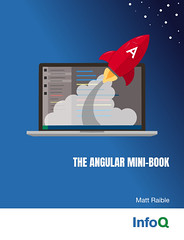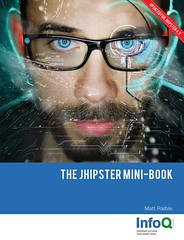Today I began my journey in evaluating Open Source CMS applications. The motivation for this adventure can be found in my post titled "Building a website with an Open Source CMS". Basically, I'd like to find a good solution to build small-to-medium size websites. I want full-control over the design and features, and it shouldn't be too hard to configure, install or administer. I received many suggestions on my initial post, and thanks to these comments, I'm considering the following CMS solutions:
The reason OpenCms didn't make this list is because of Tim Howland's first demo (he left the link in a comment). As soon as he dropped into a shell, I gave up. I also tried OpenCMS a couple of years ago and couldn't get it to work. I still have a bad taste in my mouth from that experience.
Of this list, I was able to eliminate 3 options quite quickly: Bricolage, MeshCMS and AtLeap. Bricolage b/c their site was down for days when I first started looking at CMSs. In addition, it's written in Perl - of which I've never written a single line - and I don't feel like I'd be well suited to customize a Perl product. As for MeshCMS and AtLeap, both of these were eliminated b/c of the lack of mailing list traffic. This represents a small community IMO and I'd hate to start using a product that's not well supported or well documented. This is unfortunate b/c I could probably customize these products easier than the rest. Nevertheless, it's my customers that are important, not me.
This leaves me with three Java solutions (Alfresco, Daisy, Magnolia) and two PHP solutions (Joomla, Drupal). I'm not too keen on including Alfresco b/c I've never heard of it, but readers of my last post recommended it, as well as my colleague Bill Dudney (another friend who forgot how to blog). At first glance, there are a couple of major differences between the Java and PHP solutions. The Java ones definitely take the cake on download size:
- Daisy 1.3.1: 59 MB
- Magnolia 2.1: 13.4 MB
- Alfresco 0.6 (with Tomcat): 30.3 MB
- Joomla 1.0.1: 1.7 MB
- Drupal 4.6.3: 447 KB
Yes, large downloads is the nature of Java applications - but it's interesting to see the wide discrepancy b/c the 3 Java options listed here. In addition, it's a little disappointing that I can't download Alfresco standalone - why does it *have* to come with Tomcat or JBoss? Looking through the Tomcat directories and files - there doesn't seem to be any Alfresco-specific settings or files. Why can't I just download the WAR?
My goal in this session was to install these different CMSs and see which were the easiest to install - as well as which had the features I need to continue evaluated them. What I found was that Daisy is out of the running. This is primarily because it's a wiki, not a CMS. No wonder the JSPWiki guy was impressed with Daisy a few weeks back. Furthermore, the number of things you have to do to get Daisy installed is very long.
Magnolia, on the other hand, was very easy to install. Drop two WAR files into Tomcat and 10 minutes later you have a CMS. Yeah, that's a little scary - it took 10 minutes (647740 ms to be exact) to startup Tomcat after installing Magnolia. While I appreciate the easy installation, I'm still interested to see what kind of data store Magnolia is using. Is it using an embedded database or what? I didn't have time to look, but rather played around with the admin console a bit. I was very impressed with the admin console - even though I didn't figure out how to edit the homepage. It appears to be using Ajax everywhere. Right-clicking to edit a page even brings up an application menu (rather than a browser menu). Magnolia is impressive at first glance and will be included in Part II of my evaluation.
Alfresco, with a 0.6 release, was almost off my radar. The version number makes it seem like a very immature product - and the fact that it requires JDK 5 makes it seem even more immature. Upon startup, it spit out a number of errors - but they seem to be well documented in its "README_tomcat_linux.txt" file. I used OS X and despite the errors - everything appeared to be working OK. However, when I pulled up http://localhost:8080/alfresco, I immediately understood why Bill likes it. It looks like it's using JSF, and I'm willing to bet it's using MyFaces (he's a committer on the project). The disappointing thing I noticed after pulling up the initial page is that it's a login page. I'd expect to see a reader view initially rather than an admin view. After logging in, the interface seems very nice and easy to work with. However, after 30 seconds of clicking on stuff, I can't figure out how to get the reader view to show up - so I give up. I'm going to let this CMS graduate to Part II, but only because I didn't spend much time with it - and also because the UI looks quite polished.
I installed and played around with Daisy, Magnolia and Alfresco all in a 3-hour period today. First of all, I'd like to give props to all the authors of these OS projects as each was installable according to its instructions and I didn't have to google for a single setting. I installed Joomla and Drupal last week - both in under 10 minutes. Joomla was definitely more impressive - mainly because it's default homepage (note: this can change every hour) looks pretty cool. Drupal, on the other hand, is a bit more plain jane. This is not a bad thing necessarily - as it might be easier to design with a clean slate rather than remove-features, then-design. I did have to install PHP4 on my Mac to run both of these packages, but Server Logistics made that super easy. I also tried to install Joomla 1.0 on my Windows box (which has Apache 4.0.7 and PHP 4.3.3 from BlueGlue), but it failed halfway through the install with errors that my user/pass for the database were wrong. Not a big deal, but frustrating since it works fine on the Mac (and yes, the user/pass I'm using are correct).
Watch this space. Part II will address customizing each CMS to use an already-created theme, as well as playing around with each's features. I'd prefer a package that has built-in support for multi-author blogs - so that might make Magnolia and Alfresco look bad. However, I'm not going to hold it against them since I'm a Roller fan and committer. I don't mind using a 2nd application for blogging - especially if the built-in package is less than full-featured.
Conclusion: Alfresco, Magnolia, Joomla and Drupal are the easiest open source CMS applications to install (of the ones I looked at). Daisy was easy to install according to its instructions (of which there were many), but it's more of a Wiki than a CMS.
Update on Saturday at 1:00 p.m. - Based on reader's feedback to this post, I went ahead and installed three more: Plone, eZ publish (gotta love the domain name) and OpenCMS. All the previous CMS applications I installed on OS X, and I installed these 3 on Windows XP. I installed OpenCMS first, and while the setup was easy, it took 18 minutes to finish its importing of data. My Windows machine is easily 2x as fast as my PowerBook, so my guess is this would've been quite painful on the ol' Mac. Regardless, it's a one time wait-fee, so I can't really ding them for that. I played around with the Admin UI for about 5 minutes and found it extremely easy to use - as well as intuitive. I dig how you can view the content and edit it very easily. I never had to read any documentation to figure out how to work this system.
Next up was eZ publish. It took a bit of fiddling to get the installation to work. I had PHP 4.3.3 installed with Apache 2.0.47, and I upgraded to PHP 4.4 before trying anything. While setting up eZ publish, it told me it didn't work with 4.4, so I backed down to 4.3.3, after which it told me I needed at least 4.3.4. Thankfully, PHP is easy to install and upgrade on Windows and I got it all working fairly quickly. Of the three (and all the CMS's in fact), eZ publish has the nicest installer. The whole application and process gave me the feeling that it was the product I was looking for. It's designed to help you setup a website, and allows you to choose templates, features, etc. along the way. At the end, it stalls for a couple minutes - probably b/c it's creating everything and populating the database. The first thing I didn't like was the URLs (/index.php/feature). I wonder if that can be changed to be more path-based? Having an extension followed by additional slashes just doesn't seem right to me. From there, I logged in as an administrator and started playing around with things a bit. The Weblog feature seems very inadequate and doesn't even seem to support RSS. In addition, I couldn't figure out how to edit any of the templates in my browser. But the worst part was the admin UI was sssllloooowwww. It could have been b/c I had other stuff running, but I don't think so. eZ publish seems like a good system to recommend to friends who want quick and easy websites, but I don't think it's one for me.
The last CMS I installed was Plone. It was easy to install on Windows, but only b/c it has an all-in-one installer. I found it a bit strange that it doesn't install in a web server, but rather contains everything as part of the package. This includes Python, its own web server, and its own database (I'm assuming). It's an easy install, but I like the idea of installing a CMS into an existing web server rather than having a CMS with an embedded web server. The admin UI is simple enough to use, but it's very boxy and seems like it would be difficult to customize into a corporate or small business website. Please let me know if you feel this to be untrue (pointing to existing nice-looking installations would help). I didn't like the fact that it highlights members quite prominently, but that can probably be fixed with some good template-tweaking. The most disappointing thing I found was that I was unable to edit "skins" within the admin console. You have to download a separate package, customize it yourself, and then install it. What a pain, especially since I'd really like to be able to 1) modify template, 2) save and 3) view - just like this site allows me to do. For this reason, as well as the embedded server feature, I'm going to have to pass on Plone as well.
Conclusion 2: Alfresco, Magnolia, Joomla, Drupal and OpenCMS are the CMS applications I will continue to evaluate this weekend. I have to make a decision by Monday morning so I can start building a site with it. If any of these CMS'es don't allow me to customize its templates from a browser, please let me know so I can take it off my list.
Update on Sunday at 9:30 a.m. - I'm going to drop Alfresco and add MeshCMS for reasons stated here.



